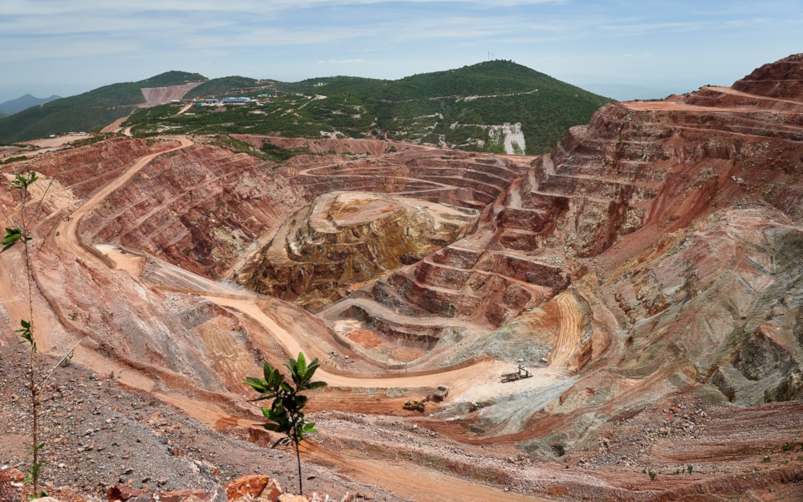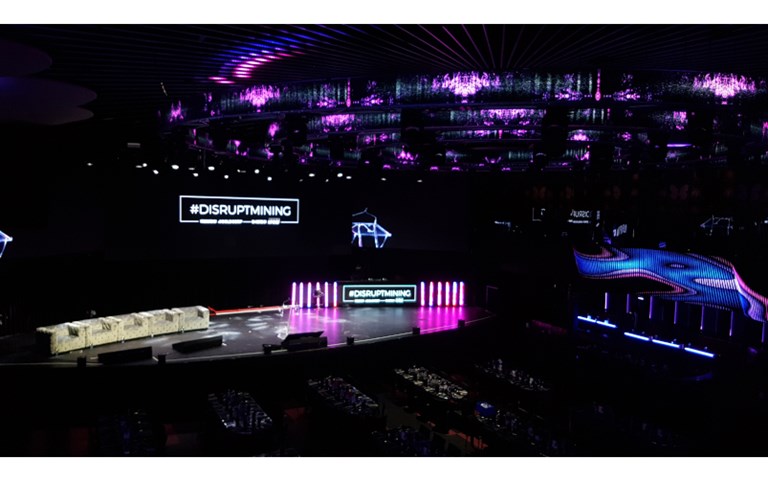The Disrupt Mining stage at the Rebel Entertainment Complex. Kelsey Rolfe
Andritz came away the winner of Disrupt Mining on Sunday night, and will get to negotiate a $1-million investment from Goldcorp.
Austria-based Andritz, which has an automation group in Vancouver, is using its digital twin technology to train artificial intelligence to operate a mineral processing facility. “We thought, ‘if we have this simulator that can actually train operators, why can’t we train artificial intelligence with it?’” Sohail Nazari, Andritz Automation’s business development manager, told CIM Magazine.
The idea is to de-risk the process of introducing AI into a mine site’s operations. Nazari said that in most cases, when AI is introduced to run a plant or other parts of a mine site, it will mostly learn what the operators are doing, rather than how to optimize the plant. “The problem with AI implementation is that you have to have an environment so it can learn how to operate,” he said. “You can’t just throw a baby in front of the operation and say ‘learn.’”
By giving it a perfect copy of the plant to learn on, it can first understand how the plant works, and then learn how to improve it and begin advising the operator.
Andritz was among three finalists that took part in the live “Dragons’ Den-style” finale at the Rebel Entertainment Complex during the annual PDAC convention.
Related: Creating a simulation, or “digital twin,” of a plant or piece of equipment can help operators prepare for any eventuality
Atlantic Canada miner Anaconda Mining pitched its two-stage drilling method for making narrow vein mining more economical, called Sustainable Mining by Drilling. The technology was developed for the company’s Romeo and Juliet narrow vein deposits and was the result of a collaboration with Newfoundland’s Memorial University, which began in June 2017.
Voith Turbo, a division of German multinational Voith, presented its IoT application Beltgenius ERIC, which creates a digital twin of belt conveyors to identify potential risks and inefficiencies to the belt. The technology reduces downtime and improves energy efficiency, and allows for predictive maintenance.
The proposals were evaluated by Goldcorp chairman Ian Telfer, Sue Paish, the CEO of Canada’s Digital Technology Supercluster, University of British Columbia mining engineering student Jacob Yeung, KPMG global head of mining consulting Katie Valentine and venture capital firm Chrysalix founder and CEO Wal van Lierop.
During Andritz’s seven-minute question and answer session with the judges, Paish asked why miners should turn to the company for an AI solution, given that it is a crowded field with many established players. Nazari said the company was “very much pro-collaboration,” and would be open to working with another AI firm if they thought they could improve on the technology.
While Andritz took home the prize money, Goldcorp has worked with other finalists in the past so it may not be the end for Anaconda and Voith. According to Goldcorp CEO David Garofalo, the company has invested $10 million across 10 projects since the start of Disrupt Mining in 2017.
LlamaZoo Interactive, one of last year’s finalists whose MineLife VR software is in use at a Teck Resources site, is working with Goldcorp to bring data visualization to its operations. Acoustic Zoom, the 2018 winner, is currently conducting a survey pilot program at the company’s Red Lake mine.



